Hawamahal in Jaipur- A unique architecture made of Pink Sandstone
Hawamahal
Hawamahal, also known as the Palace of Winds, is a palace located in Jaipur, the capital city of Rajasthan India. It was built in 1799 by Maharaja Sawai Pratap Singh and was designed by Lal Chand Ustad in the form of the crown of Lord Krishna. The palace is made of red and pink sandstone and is famous for its intricate latticework and unique architectural style. The five-story building is shaped like a honeycomb and has 953 small windows, called jharokhas, which are decorated with intricate carvings and allow a cool breeze to flow through the palace, hence the name “Palace of Winds”.
Hawamahal in Jaipur was originally built for the royal ladies to observe the everyday life and processions of the city without being seen by outsiders. Today, it is one of the most popular tourist attractions in Jaipur and is a must-visit for anyone interested in Indian history and architecture.
Hawa mahal history
Hawamahal was built in 1799 by Maharaja Sawai Pratap Singh, who was the grandson of Maharaja Sawai Jai Singh, the founder of Jaipur. The palace was designed by Lal Chand Ustad, who was a renowned architect of his time. The palace was built as an extension of the City Palace, which was the royal residence of the Maharajas of Jaipur. Hawa Mahal was specifically built for the royal ladies to observe the everyday life and processions of the city without being seen by outsiders. The palace was also meant to provide a cool and breezy retreat during the hot summer months of Jaipur.

The palace is a unique example of Rajput architecture and is known for its intricate latticework and delicate carvings. The palace was designed in the form of the crown of Lord Krishna, which is why it has a distinctive pyramidal shape. The five-story building has a total of 953 small windows, called jharokhas, which are decorated with intricate carvings and allow a cool breeze to flow through the palace.
Hawamahal in Jaipur has been a witness to many historical events, including the Indian Rebellion of 1857 and the first war of Indian independence in 1857. The palace has also been used as a venue for cultural events and ceremonies, and is now a popular tourist attraction in Jaipur, drawing visitors from all over the world.
Also read- Amber Fort, Jaipur: The pride of India, an immense fortification with unexpected beauty and charm
Places to visit in Hawamahal
Hawa Mahal, also known as the Palace of Winds, is a popular tourist attraction in Jaipur, Rajasthan. Here are some places to visit when exploring Hawa Mahal:
The Hawamahal Palace
The palace is a unique example of Rajput architecture and is known for its intricate latticework and delicate carvings. You can explore the five-story building, with its 953 small windows, and enjoy the beautiful view of the city.
Jantar Mantar
Jantar Mantar is an astronomical observatory located in Jaipur. It was built by Maharaja Jai Singh II in the early 18th century and is one of the largest and best-preserved observatories in the world. Jantar Mantar consists of a collection of architectural astronomical instruments that were used to measure time, predict eclipses, and study celestial objects. The observatory features a variety of instruments, including the Samrat Yantra, which is a giant sundial that can tell the time with an accuracy of about two seconds.
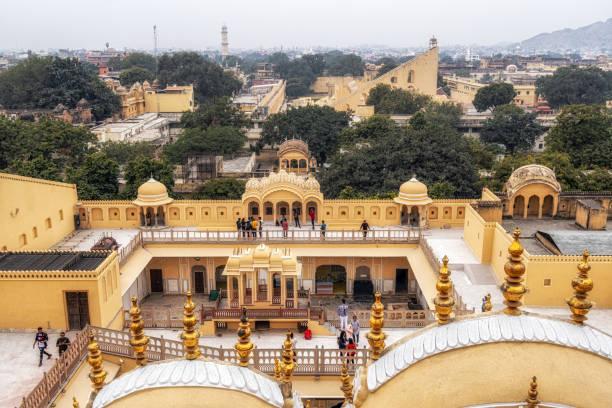
Other instruments at Jantar Mantar include the Jai Prakash Yantra, which is a concave hemisphere with markings that were used to measure the altitude and azimuth of celestial objects, and the Rama Yantra, which is a set of two cylindrical structures that were used to measure the altitude and azimuth of celestial objects. Jantar Mantar is a UNESCO World Heritage Site and is a must-visit for anyone interested in astronomy, science, or history.
City Palace-Hawamahal is a part of the City Palace complex, which is the royal residence of the Maharajas of Jaipur. You can visit the Palace Museum, which has a collection of royal artifacts, including costumes, weapons, and artwork.
Albert Hall Museum– This museum is located nearby and features a collection of artifacts and artwork from Rajasthan and other parts of India.
Nahargarh Fort
Nahargarh Fort is a historic fort situated on the edge of the Aravalli Hills in Jaipur. The fort was built in 1734 by Maharaja Sawai Jai Singh II, the founder of Jaipur. It was originally named Sudarshangarh, but it was later renamed Nahargarh, which means “abode of tigers”. The fort was built primarily as a defensive structure, to protect the city of Jaipur from invading armies. It also served as a retreat for the royal family during times of peace. The fort has a number of palaces, temples, and gardens, as well as a large reservoir that was used to store water. One of the main attractions of Nahargarh Fort is its stunning panoramic view of the city of Jaipur. Visitors can climb to the top of the fort and enjoy a breathtaking view of the entire city, including the famous Jal Mahal and Amer Fort.

Bapu Bazaar and Johari Bazaar- These are popular markets in Jaipur where you can shop for traditional Rajasthani handicrafts, textiles, jewelry, and souvenirs.
Chokhi Dhani- This is a cultural village located on the outskirts of Jaipur, where you can experience traditional Rajasthani culture, food, and entertainment.
How to reach Hawamahal
Hawamahal in Jaipur is located in the heart of Jaipur, the capital city of the Indian state of Rajasthan. The nearest airport to Jaipur is the Jaipur International Airport, which is located about 13 kilometers away from the city center. Jaipur is well-connected to major cities in India by rail. Jaipur is well-connected to major cities in India by bus. You can take a state-run or private bus to Jaipur, from the major cities of India. If you are coming by private vehicle take the NH8 or NH48 to reach Jaipur.
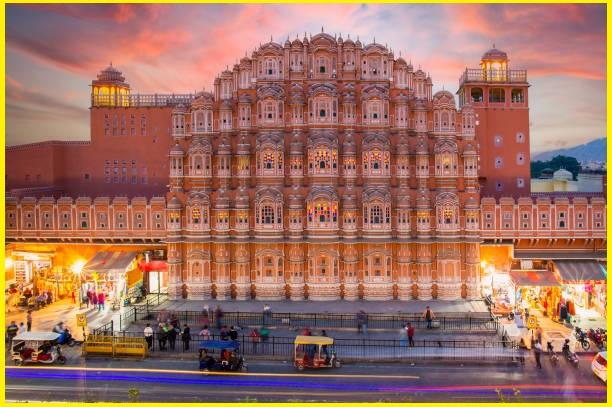
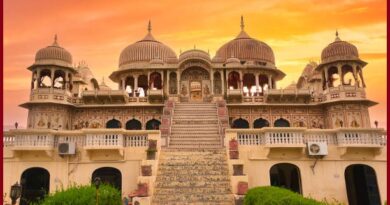
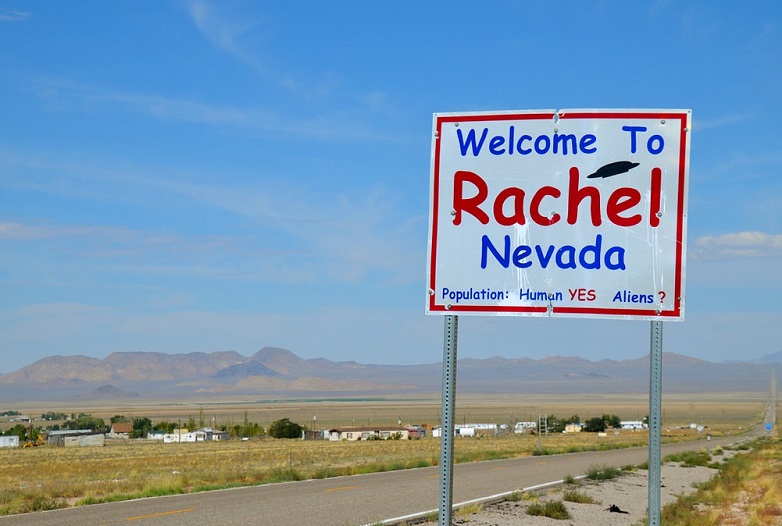
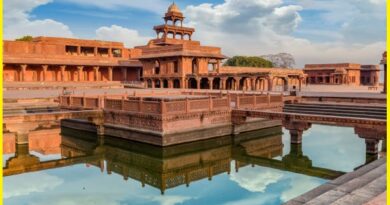
Pingback: Jantar Mantar- A extraordinary Place and UNESCO World Heritage site - Geotourism
Pingback: Nahargarh Fort-A Royal Legacy in Stone - Geotourism